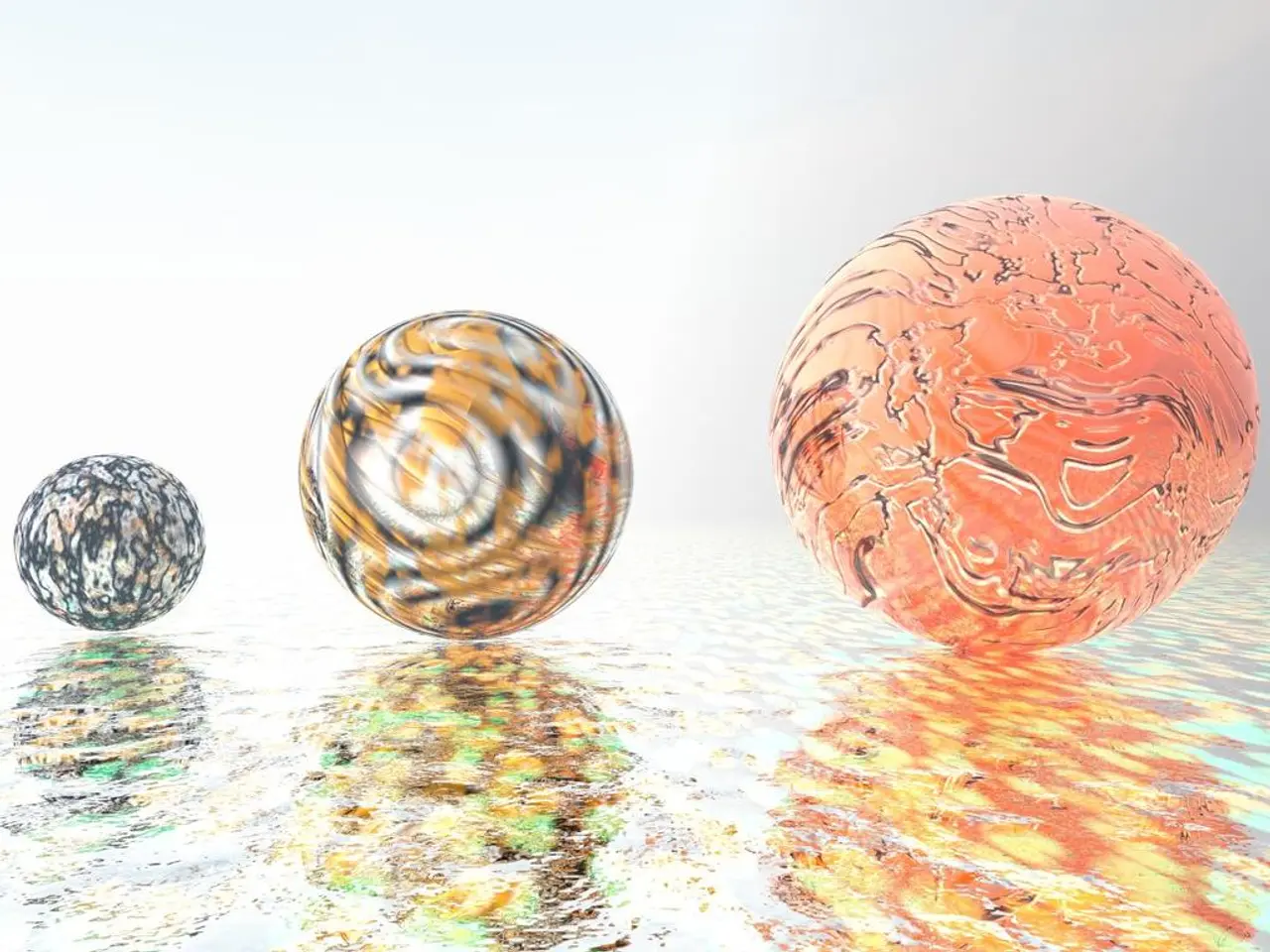A Unique Physical Phenomenon Observed: A Sphere Descending Perpendicularly on a Wall
In a groundbreaking discovery that has left the scientific community buzzing, researchers at the University of Waterloo have successfully demonstrated a sphere rolling down a vertical plane under specific conditions of elasticity. This finding, published in the prestigious journal Soft Matter in April, has challenged long-held assumptions in the field of physics and opened up exciting possibilities for robotics and exploration.
The key to this remarkable phenomenon lies in the interplay between the deformation-induced forces and surface elasticity, which generate a spontaneous torque, enabling the sphere to roll without the need for external force or traditional frictional torque expected from gravity on inclined planes.
Normally, on a vertical surface, the normal force pressing the ball against the surface is zero, so no frictional force can emerge for rolling. However, in this novel case, the sphere's softness and elasticity cause deformation that interacts with the elasticity of the wall’s surface. These deformations create internal forces within the ball and surface, yielding a spontaneous rolling torque, allowing the sphere to roll by itself down or up a vertical plane without sliding or bouncing.
This motion differs fundamentally from classical rolling because it's driven by elasticity-induced forces rather than gravity or external torque. Experiments used spheres with a softness similar to gummy bears or squash balls and matched them with suitably compliant surfaces to optimise this effect.
The potential practical applications of this discovery are vast. In environments where traditional mechanical rolling is infeasible, such as confined pipes and caves, soft spheres or spherical robots could navigate vertical or irregular surfaces with ease. This could pave the way for robots that can maneuver on spacecraft interiors, asteroid surfaces, or other low-gravity environments.
Inspection and maintenance robots could also benefit from this discovery, as machines that can climb or descend vertical smooth surfaces without motors or magnets could inspect infrastructure like skyscraper walls, large tanks, or wind turbine blades with minimal energy.
Moreover, the elasticity-based motion could help design compliant, adaptable robots that mimic natural rolling or crawling in complex terrains. This could revolutionise the field of soft robotics and bio-inspired movement.
Sushanta Mitra, executive director of the Waterloo Institute for Nanotechnology, expressed his amazement at the discovery, stating that the researchers were initially in disbelief when they first saw the sphere rolling down a vertical plane. He added that the discovery could change the way robots and vehicles move on vertical surfaces, currently limited to horizontal or slightly inclined surfaces.
The team's findings could have practical implications for the creation of soft robots that can scale vertical walls. The front edge of the rolling sphere acts as a closing zipper, while the back edge acts like opening it, creating torque for rolling. The researchers double-checked their findings because the phenomenon seemed to defy common sense.
This discovery could have applications for exploring or monitoring inaccessible infrastructure and natural environments, both on and off Earth. With further research and development, this groundbreaking finding could pave the way for a new era in robotics and exploration.
- In the realm of science and technology, this groundbreaking discovery, published in Soft Matter, challenges assumptions in physics by demonstrating a sphere rolling on a vertical plane through deformation-induced forces and surface elasticity.
- The discovery of elasticity-based motion for spheres has opened up exciting possibilities for robotics and exploration, particularly in areas where traditional mechanical rolling is infeasible, such as confined spaces or low-gravity environments.
- The findings could revolutionise soft robotics and bio-inspired movement, enabling the design of compliant, adaptable robots that mimic natural rolling or crawling in complex terrains, potentially transforming the field of robotics and expanding the scope of exploration.




